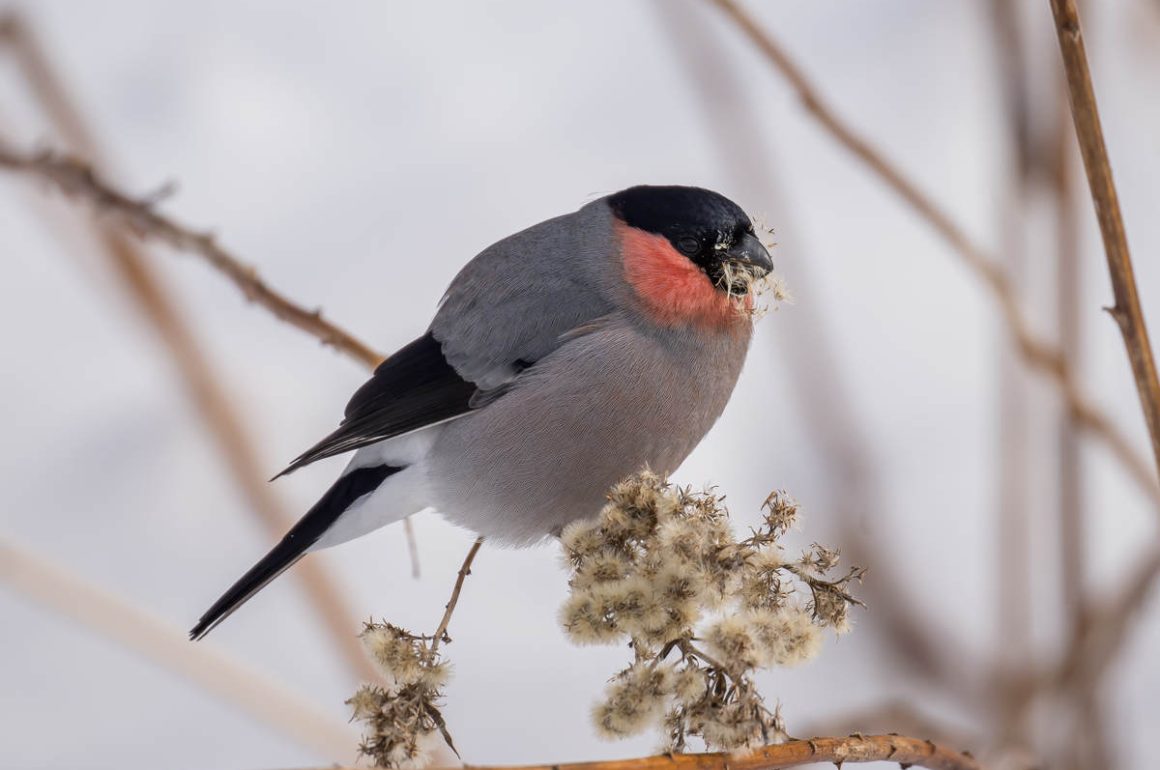
Given how far Hokkaido is from Europe, it seems a bit surprising how many bird species wintering on this Japanese island have a name starting with “Eurasian”. Or how many of these species I have also seen in my parents’ garden in Germany.
Like the Eurasian Nuthatch. It keeps itself busy in winter – according to the HBW, “In winter months spends up to 90% of time in gathering food.”
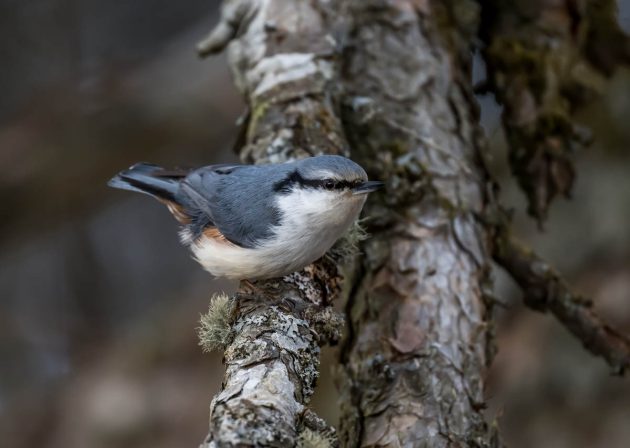
No wonder then that the life of nuthatches tends to be short. One website states that only 15% of the birds that hatch make it to become first year breeding adults, 6% make it to the second year, and 3% to the third year.
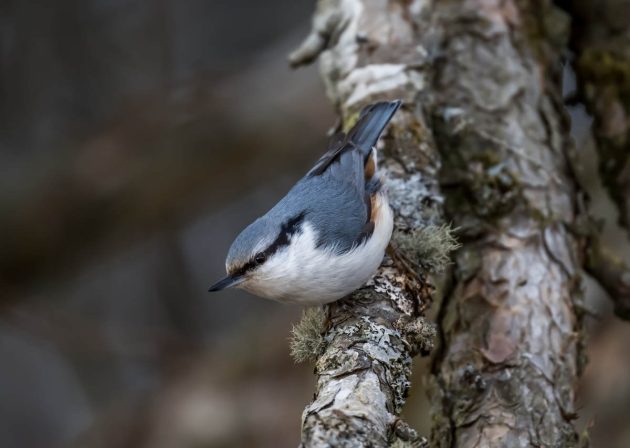
Other species – such as starlings or tits – stealing the nesting site of Eurasian Nuthatches is one of the major reasons for breeding failure.
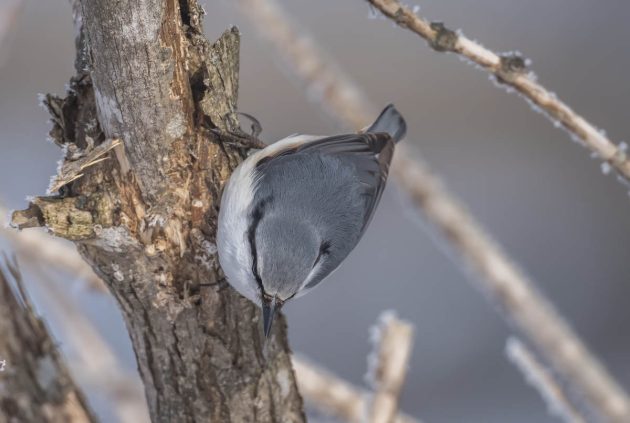
A paper looks at nestling growth of Eurasian Nuthatches and summarizes the results in a sentence that will warm the heart of every birdwatcher and nature lover: “The nestling growth was well fit by the logistic and Gompertz models, whilst the von Bertalanffy equation was less accurate, especially when predicting the asymptotic mass and the mass in the first development stages.”.
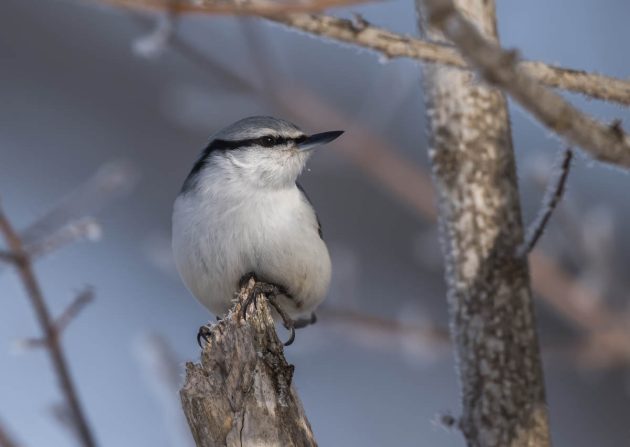
A group of nine researchers published a paper titled “Exploring the fecal microbiome of the Eurasian Nuthatch (Sitta europaea)”. Makes you wonder what they talked about during their lunch breaks.
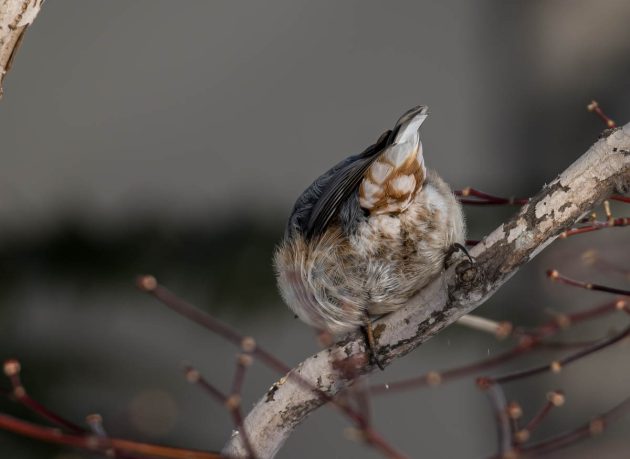
People tend to eat more food when in company. The same was shown for Eurasian Siskins (source).
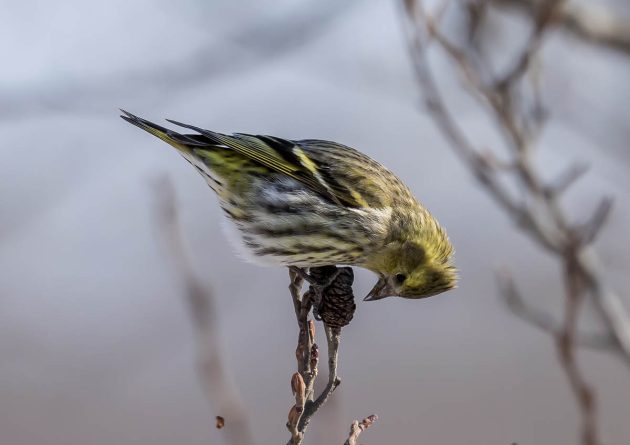
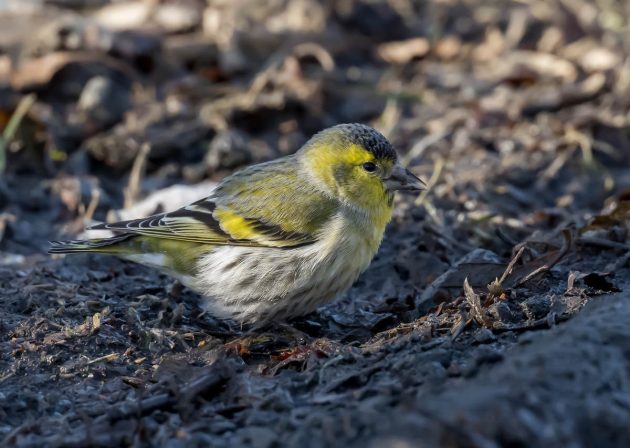
But while humans mainly try to stay slim and fit for health reasons, Eurasian Siskins care more about the danger of being eaten. If the predation risk is high, they prefer to stay slimmer (source).
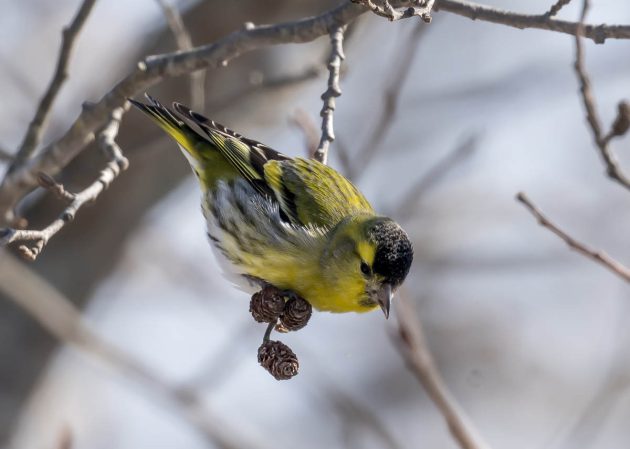
If you want to impress your friends with this knowledge, don’t use the words I use above – better talk about the mass-dependent predation hypothesis, according to which birds reduce their body mass when predation risk increases.
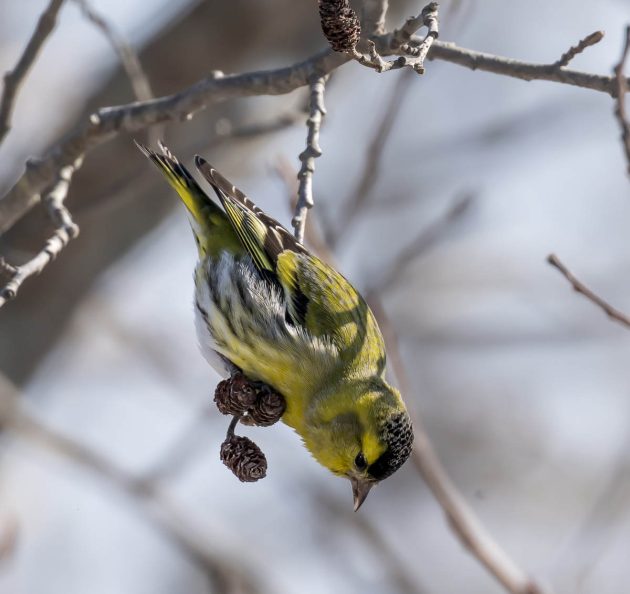
Another factor influencing how fat a bird gets is whether it is a resident or a transient bird. For Coal Tits, resident birds were found to be slimmer than transients, which makes sense as they have better knowledge of the available resources and thus less volatility in their food supply (and of course slimmer birds are better at not being eaten themselves). In science speak, this is named the optimal body mass hypothesis.
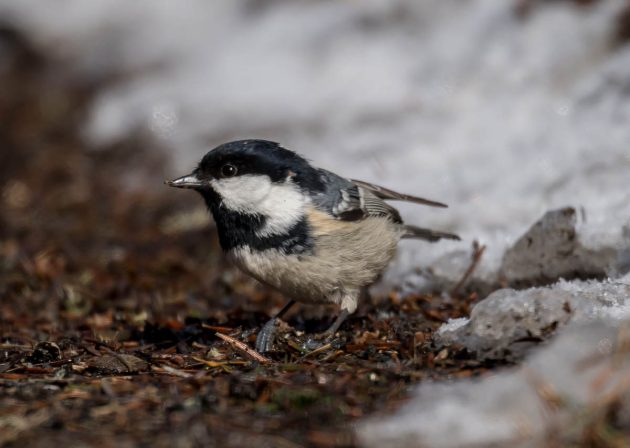
Similarly, you can talk about Norberg’s hypothesis – namely that if there is a better chance to get higher-energy food, birds will spend more effort to get it (which sounds a bit obvious to me). Anyway, it seems to apply to Coal Tits – they spend more energy on snow-free days, flying to the outer branches where higher-energy food can be found, while when these are inaccessible, they mostly just lazily hop within the inner parts of the trees (source).
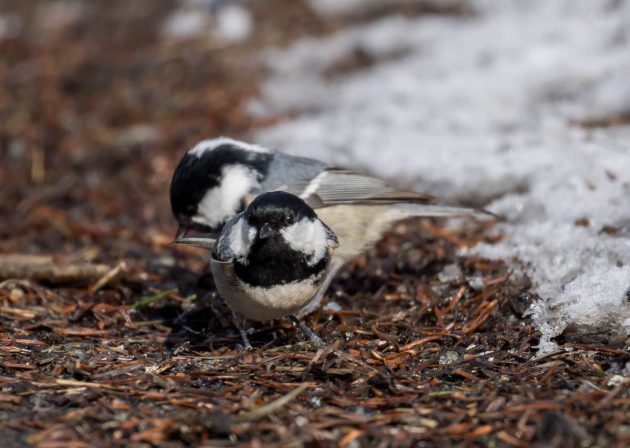
A paper published by an economist in 1971 is titled “The Coal Tit as a careful shopper“. In which said economist finds that the Coal Tits are maximizing the return to their labor when searching for food.
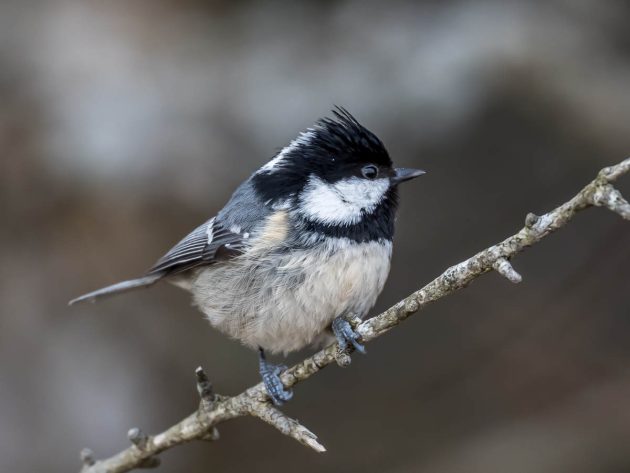
It must be frustrating to have an interesting hypothesis – such as “food-storing bird species such as the Coal Tit are better at remembering the location where they had seen food than non-storing species such as the Great Tit” – and then have the stupid birds not perform accordingly in an experiment: “In both experiments, the differences in performance between the species were small” (though the authors then indicate there is a small difference after all, hopefully convincing their parents and the grant providers that not all their work was useless).
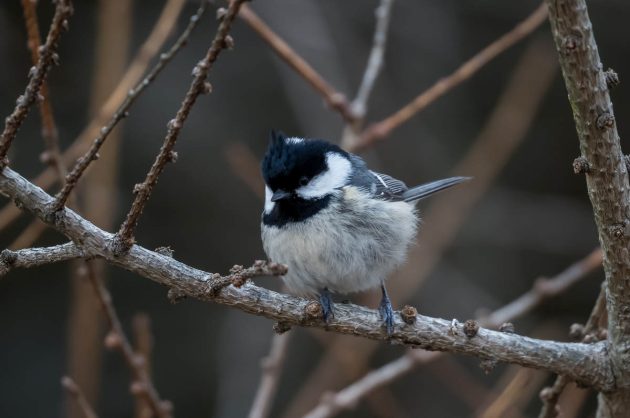
For those who like their ornithology dirty, Coal Tits are also a good choice. It seems extra-pair paternity is very frequent in this species. You can almost hear the slightly shocked tone of the abstract: “When analyzing three or more broods of the same individual, there were no completely ‘faithful’ females and also nearly no males, which were not cuckolded at least once.”
The Brown-eared Bulbul seems to be the resident bulbul/bully on Hokkaido, filling the same ecological niche of obnoxiousness as the Light-vented Bulbul in Shanghai.
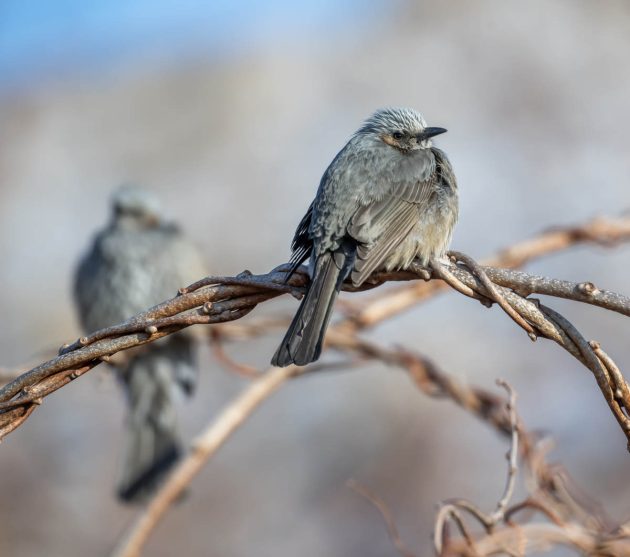
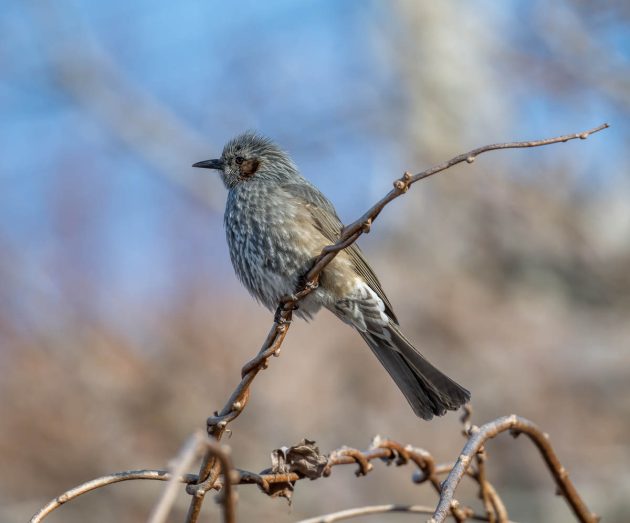
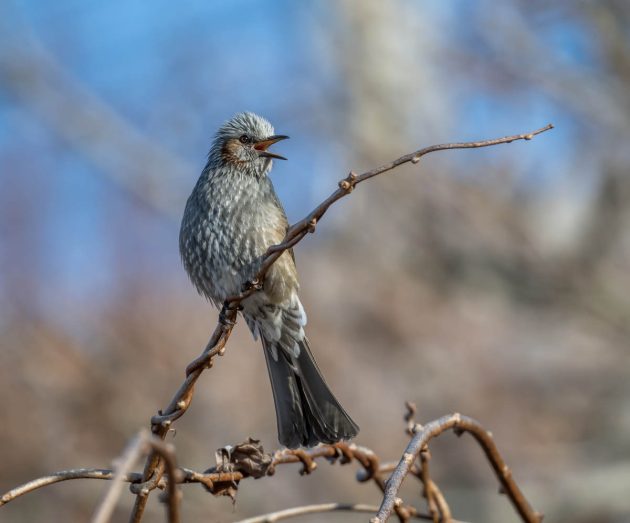
The eBird author of the entry on the Common Redpoll apparently suffers from winter depression, asking readers to “listen for their [the redpolls] chattering calls ringing through the desolate winter landscape”. No winter wonderland for this depressed writer.
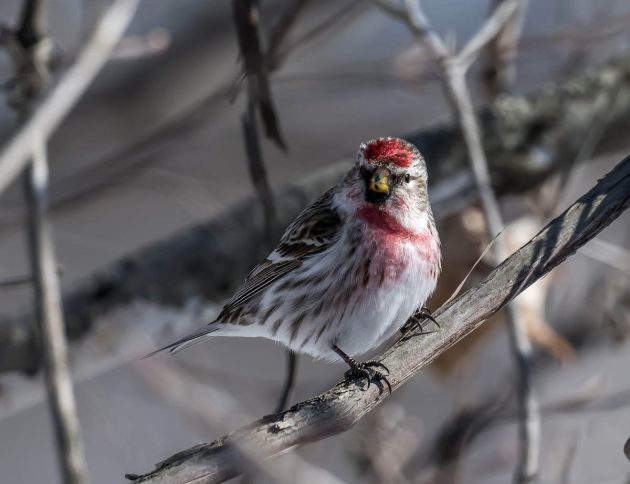
Common Redpolls can survive very low temperatures as their feather weight increases in winter (Wild Alaskan redpoll species had 31% heavier plumage in November than in July, according to the HBW).
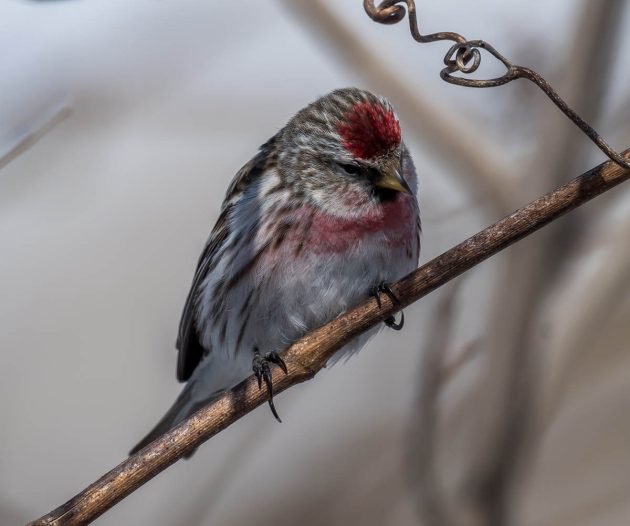
However (also according to the HBW), Common Redpolls in Alaska are able to survive at temperatures of “only” -54°C compared with -67°C in Hoary Redpolls.
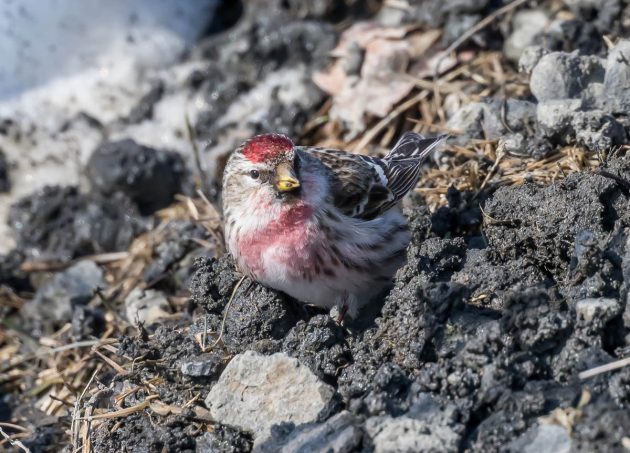
This is particularly interesting as newish research indicates that Common and Hoary Redpolls are actually the same species. Bad news for splitters, but good news for people like me who would not be able to make such a fine distinction anyway.
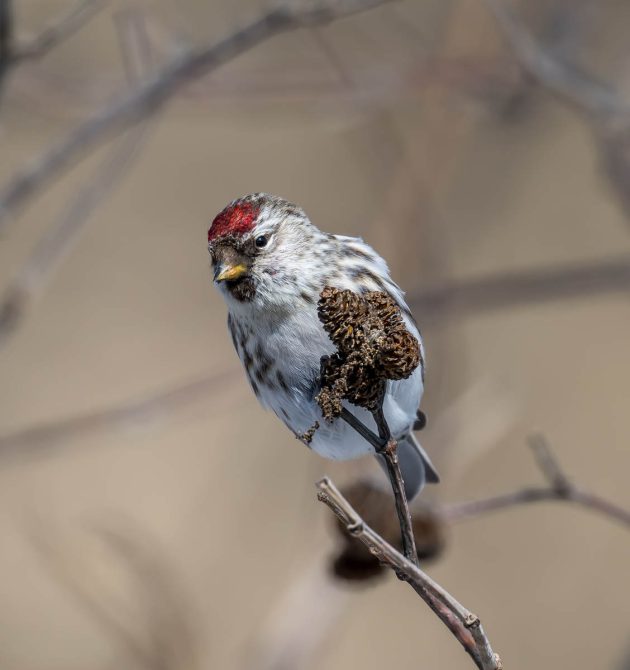
I learned that there is an organization named Finch Research Network (“Dedicated to the study and conservation of finches and their habitats globally”). Given the name and specialization, one would think that these people should be rather partial to finches – however, they state that the Eurasian Bullfinch has a “clumsy overall appearance”. This is the type of scientific-minded people who will sooner or later get in trouble when asked by their wives or girlfriends something like “Does this dress make me look fat?”
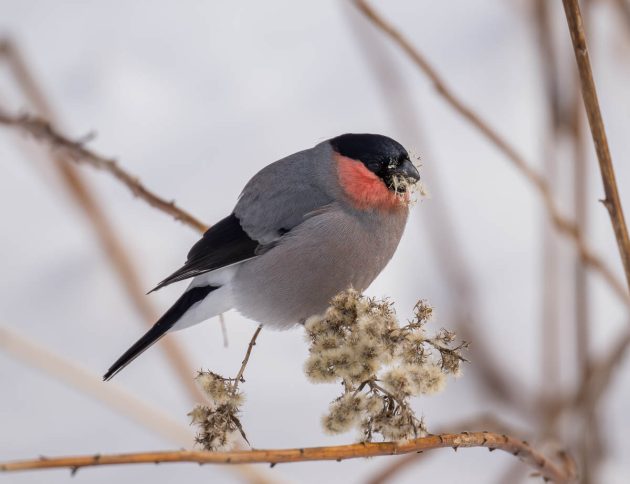
Another potential faux pas is that they might start a dinner party conversation on the “Unusual Sperm Morphology in the Eurasian Bullfinch” (source).
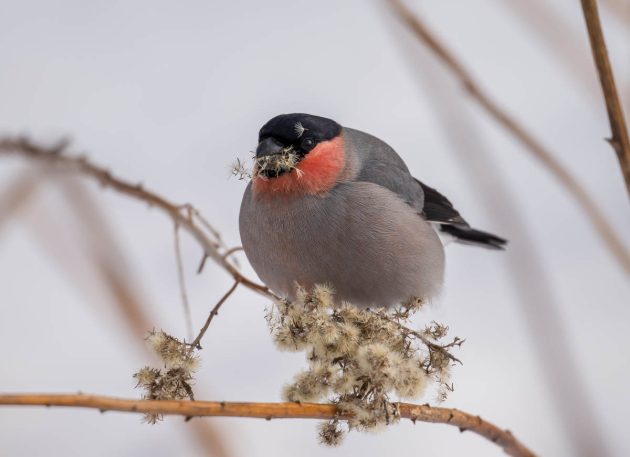
Only in very rare cases they will find a conversation partner who can continue on this theme by pointing out that “The Unusual Sperm Morphology of the Eurasian Bullfinch (Pyrrhula pyrrhula) is Not Due to the Phenotypic Result of Genetic Reduction” (source).
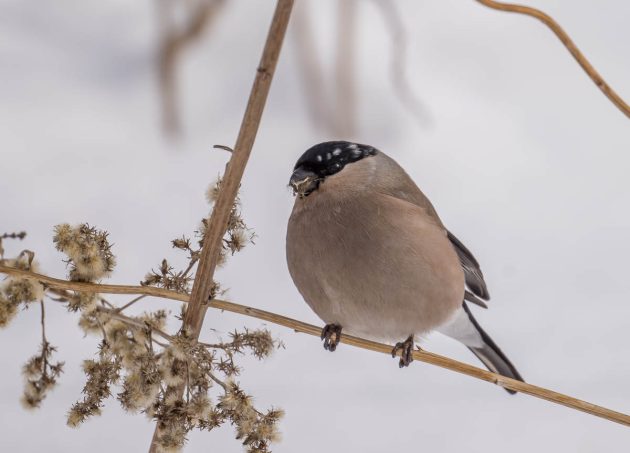
Given the political situation in Iran, Eurasian Bullfinches rarely go there – and if they do, it is a cause for a scientific paper. Luckily for them, they do not need helicopters for this trip.
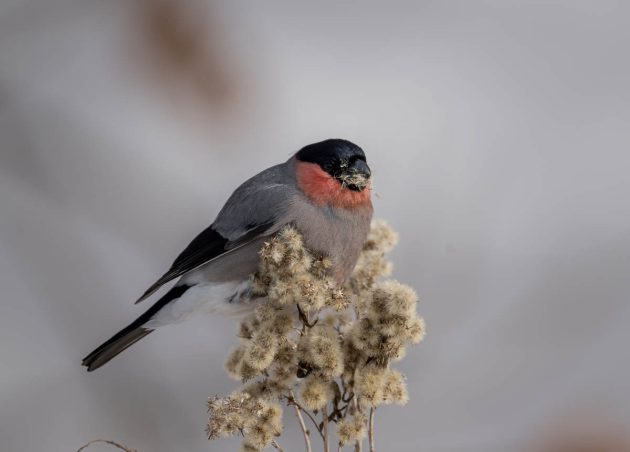
It is sometimes said that there are no real scientific breakthroughs anymore – anybody who has read the paper titled “First record of chewing lice Brueelia pyrrhularum Eichler, 1954 (Ischnocera: Philopteridae) on a Eurasian Bullfinch, Pyrrhula pyrrhula L in Kushiro, Hokkaido, Japan” knows that this is very far from the truth.
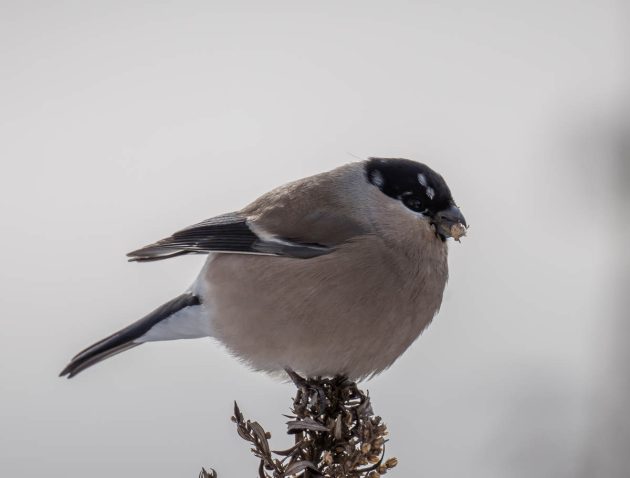
For those few readers with limited interest in chewing lice, a study on pair bonding in the Eurasian Bullfinch may be more relevant. Bird pairs were observed over time – it seems that (unlike in humans, particularly US Americans, these days) most pairs lasted until the death or disappearance of one of the two birds. In one of the few cases of bird pairs separating, the female split from a bigamous male – an act that most readers will probably approve of.
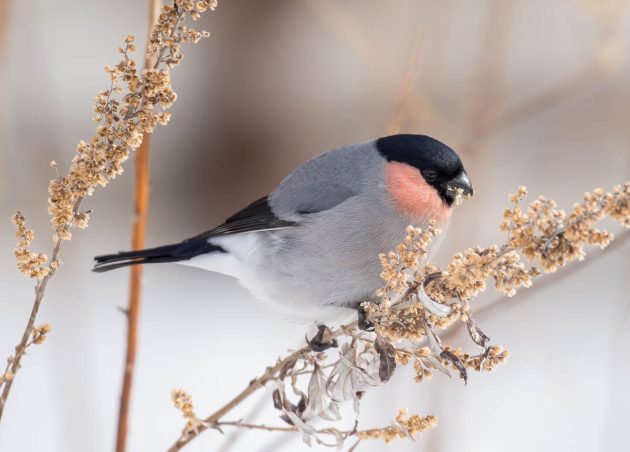
I only got a poor photo of the Asian Rosy Finch, a pity given that this is a rather attractive species. The Finch Research Network calls it a high mountain specialist, which seems a bit weird given that my photo was taken exactly at sea level. At least such a statement will not offend the species, I guess.
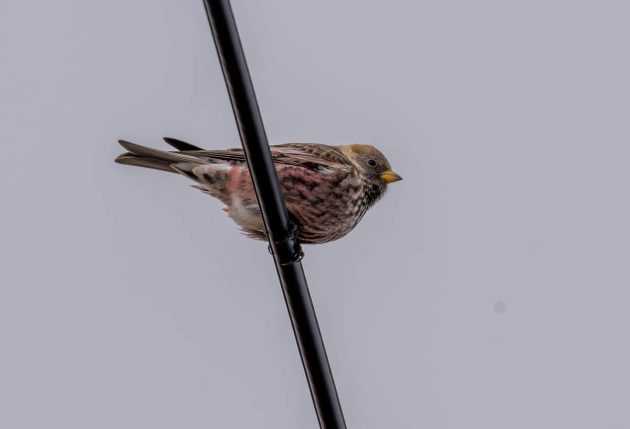
Eurasian Tree Sparrows frequently find themselves out in the wild without a glass to drink from. In winter, they solve the problem by just eating snow.
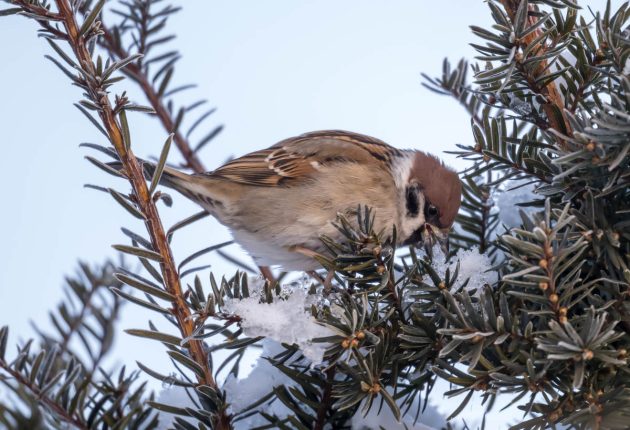
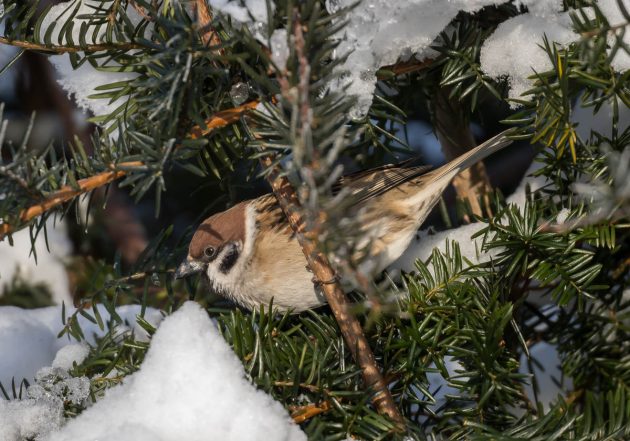
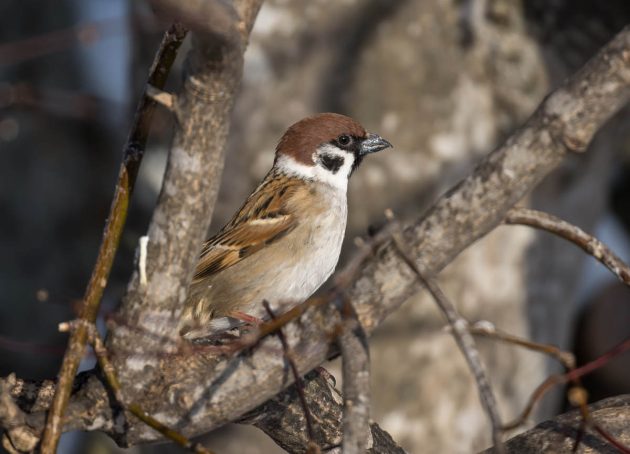
Large-billed Crows seem to be among the bird species attracting more than average attention in the past few years, partly because of their presumed intelligence.
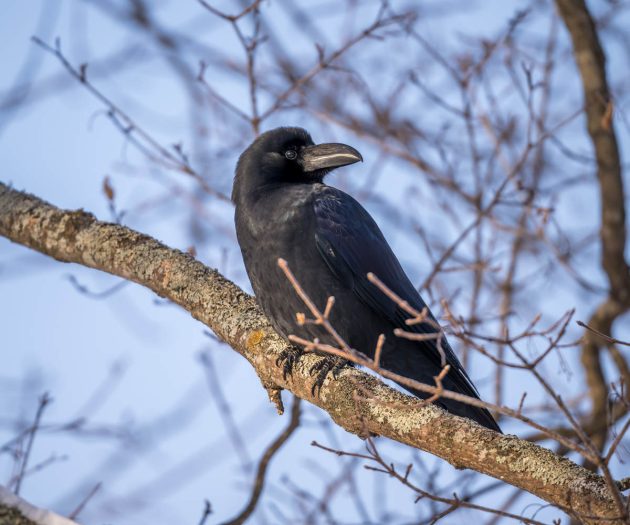
Indeed, anyone thinking that black is the best color to wear cannot be particularly stupid. Cue Johnny Cash, “Man in Black”.
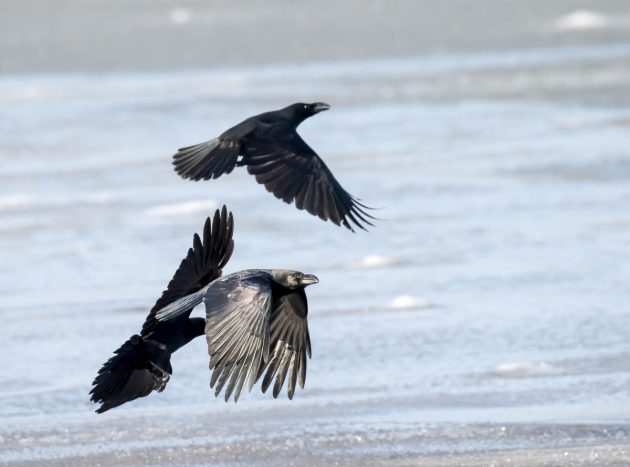
One topic related to their intelligence is tracking the gaze of these crows. One paper describes just that – how a crow’s attentional focus can be assessed by 3D tracking of its head.
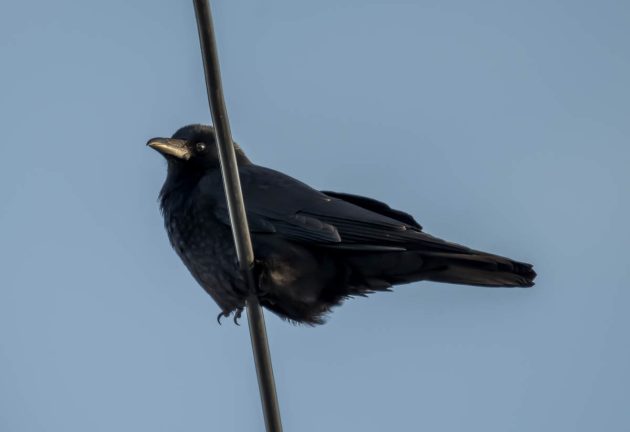
Indications of their intelligence include the likely ability to differentiate between different human languages (source) …
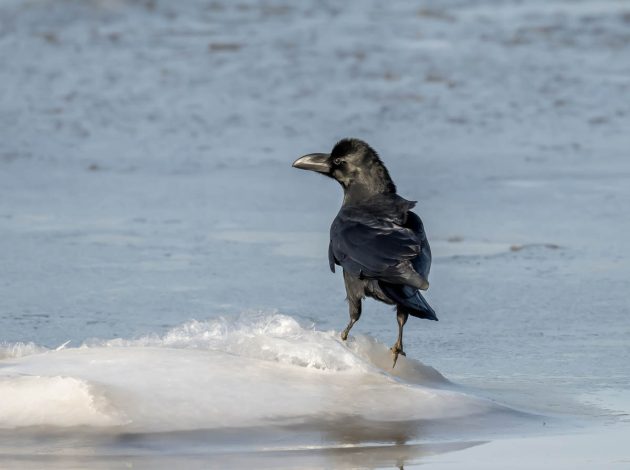
… to distinguish between photos of different bird species (source) …
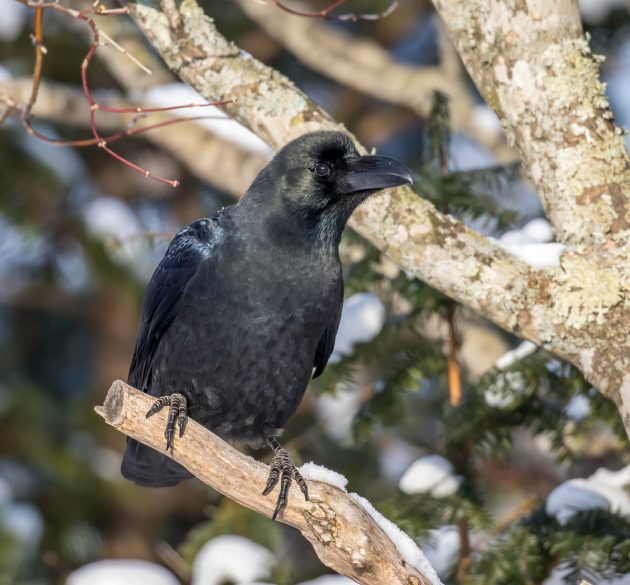
… and to solve problems by observing solutions identified by other crows (source).
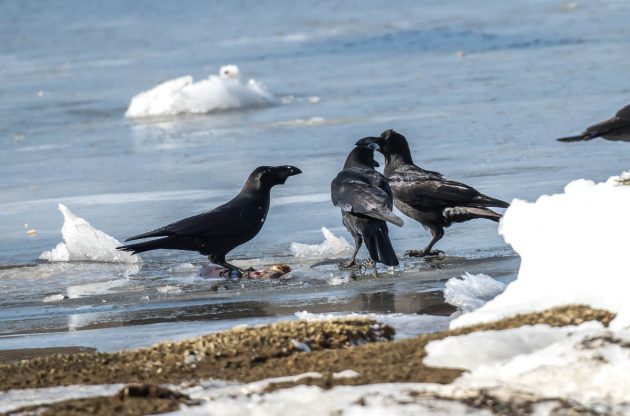
Then again, to some extent, Large-billed Crows really seem to be trash birds. One researcher observed that the number of chicks a local pair of crows had was inversely related to how many of the local garbage stations were covered with nets (and thus inaccessible to the foraging crows). Though I guess such an adaptability can also be seen as an indicator of intelligence …
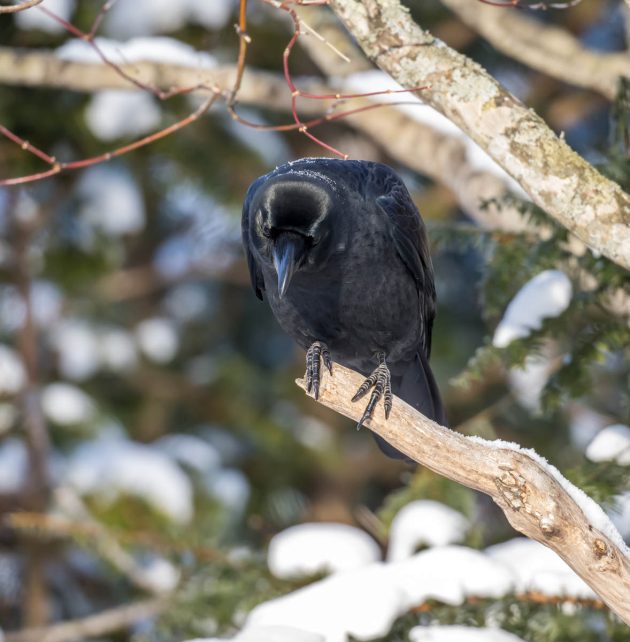
Eurasian Jays are related to these crows, they are also regarded as highly intelligent, and unsurprisingly, they are also subjected to various intelligence tests by researchers. For example, they were found to be better than human volunteers to see through magic tricks in which objects seemingly magically moved from one place to another.
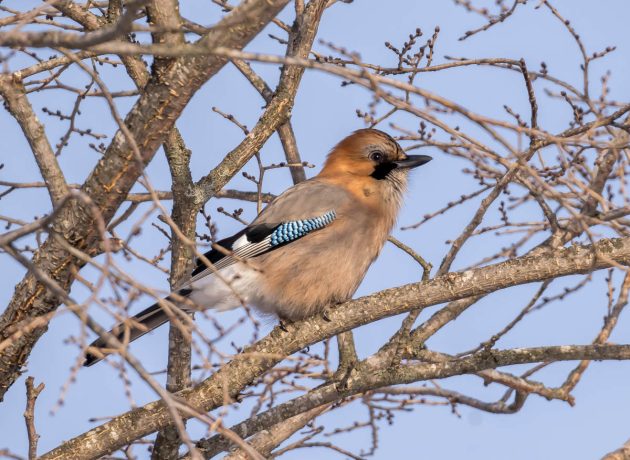
They also passed the marshmallow test, a test in which there is a reward for resisting the temptation to eat a treat immediately (if the bird waits, it gets a bigger or better treat than if it eats the initially offered treat instantly).
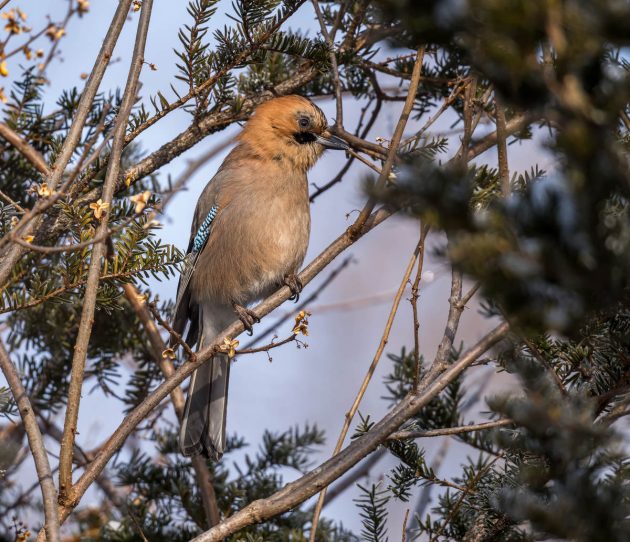
Eurasian Jays even seem to have some kind of episodic memory, one of the many things once believed to be exclusively possessed by humans (there is not much left in this category these days, unsurprisingly).
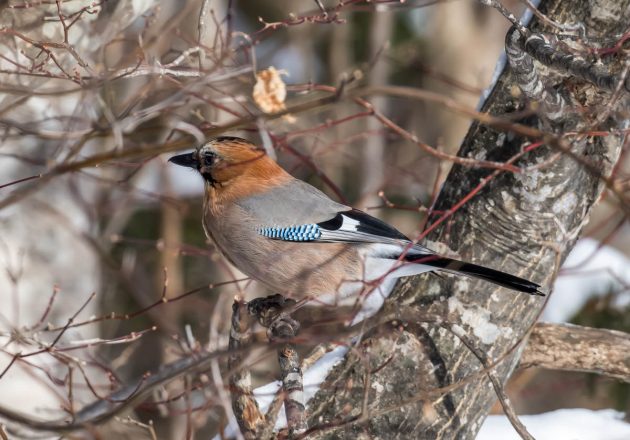
On the other hand, other research questions some of the capabilities of Eurasian Jays (and the earlier research) – maybe the jays are no more intelligent than average humans?
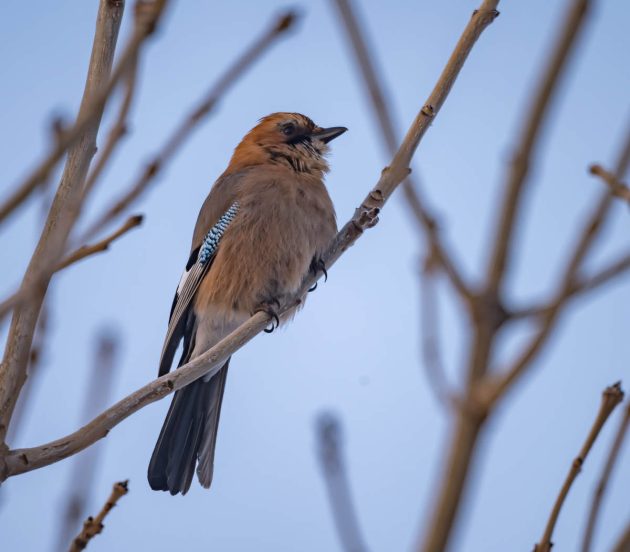
Willow Tits seem to be rather liked by birdwatchers in Britain – I found several papers on their UK presence and their decline. I guess having a beard that makes you look like a German dictator is not really an issue for British birders. One would hope that in Germany, the situation is a bit different.
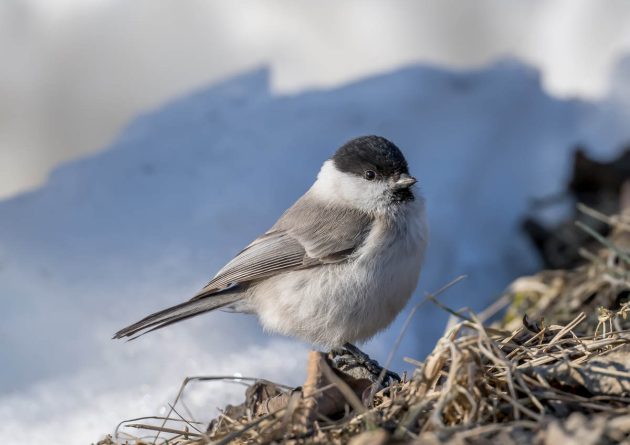
Indeed, dominant Willow Tits display a somewhat dictatorial behavior – in flocks, they exclude the subordinate Willow Tits from their preferred microhabitat (source). One reason that keeps the subordinates in the flock is the hope of becoming a dictator (well, a dominant bird) in the future.
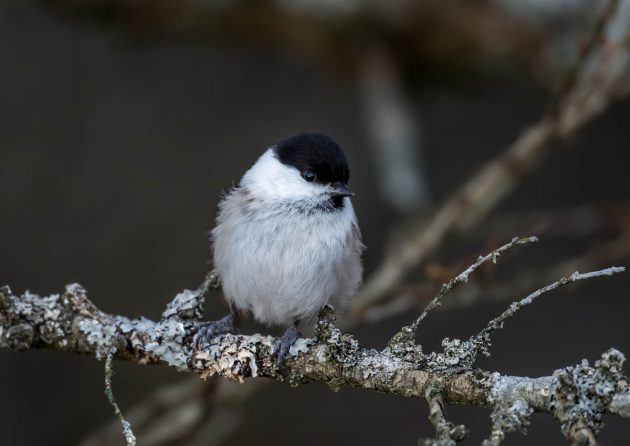
A surprising stronghold for Willow Tits in the UK is at abandoned coal mining sites – maybe they should thank Margaret Thatcher for her help in creating these sites. Apparently, “former mining sites are a stronghold for the species as they are often rather large, disused areas of accidentally rewilded land that provide the thickets of young trees that the species requires” (source).
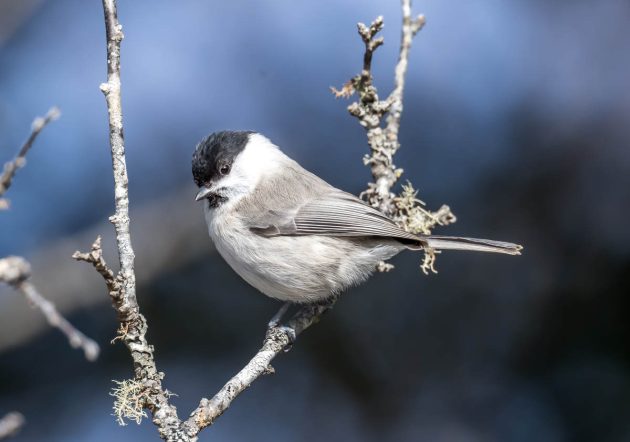
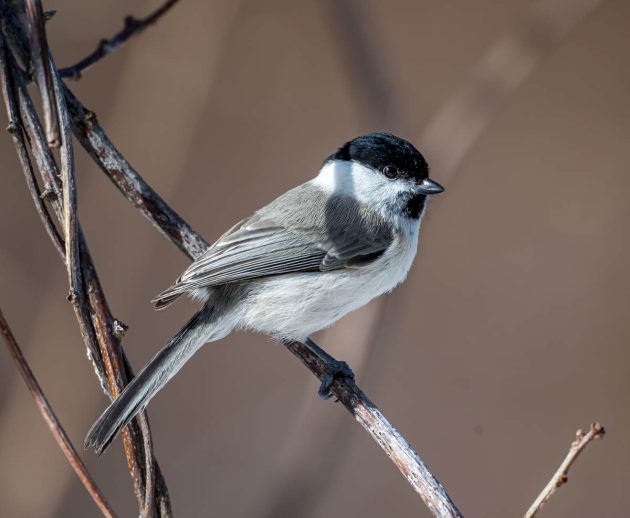
One interesting (though from a Willow Tit perspective, “tragic” would be the better word) factor in the decline is bird feeding. Species that benefit from bird feeders either compete with Willow Tits for nesting sites (e.g., Blue Tits, Great Tits) or are predators of their nests (Great Spotted Woodpecker).
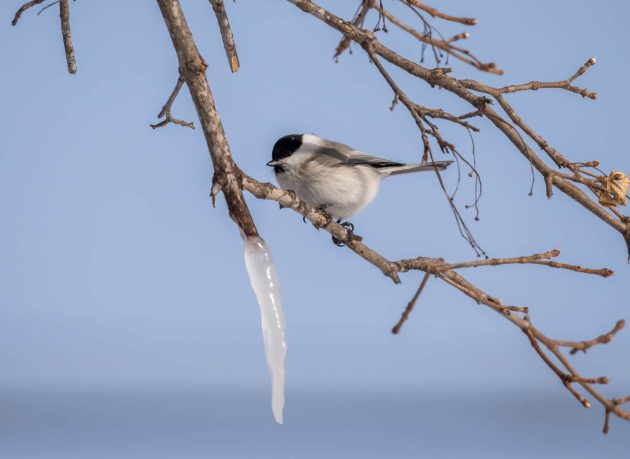
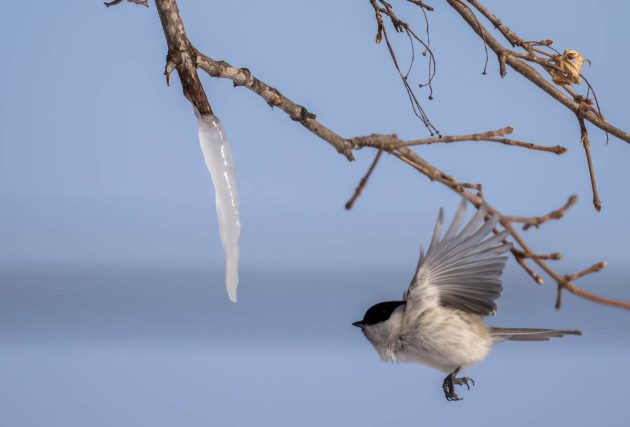
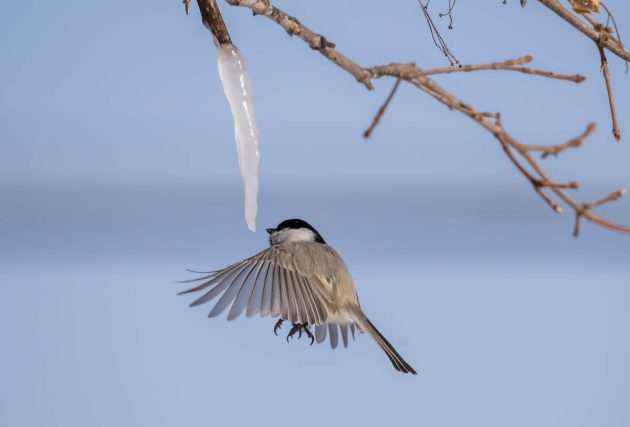
All photos taken on Hokkaido in February 2024










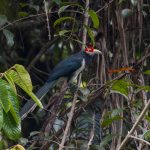
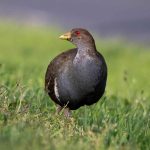
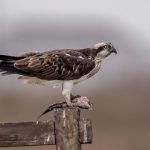
Always an entertaining read Kai.
??
Thank you for a nice piece of writing and photos.I love the references of research into fascinating (?) areas of birds. You must be a great scholar to dive into these obscure articles and bring them to life! 🙂
Thanks, James! I am not really that much of a scholar but from my background in chemistry, I know how to find information and quickly scan it.